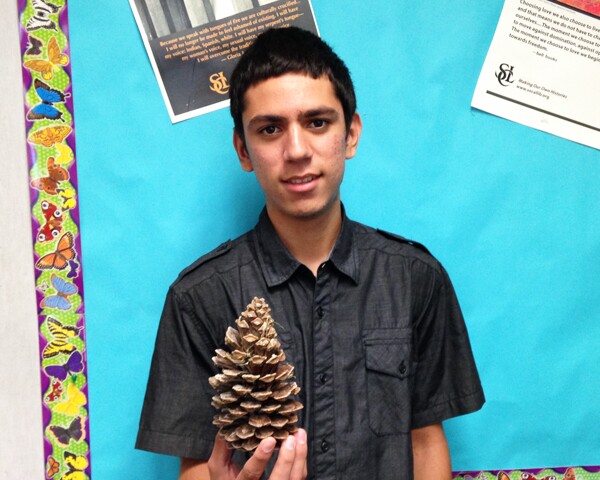Community Connections: Meet Rafael B.

What object connects you to your community? We asked this question to the Youth Voices students at South El Monte High School at the end of our first meeting, and requested that they bring this object to our next class. These objects, along with their explanations, offer physical evidence of the personal link the students have with their neighborhood, and served as their point of departure for their Youth Voices Project: their experience, memories, and personal understanding of their community. To see more of the students' work click HERE or use #kcetyv on Twitter and Instagram.
Hello my name is Rafael B. and I'm in the eleventh grade at South El Monte High School. My school community is very small and I feel there should be more trade classes like auto mechanic, and more teachers to allow for smaller classes.
The most important things people should know about me is that I'm very responsible and I have a job. The neighborhood I call home is the city of South El Monte. I've lived here for about fourteen years. The first place I would take a new visitor to South El Monte is Whittier Narrows Park where it is quiet, fresh, and there are lots of trees. The place I would avoid is Omanas Restaurant.
A pine cone is the object that connects me to my community. It is a big sticky rough cone. The reason it connects me to my community is because I spent most of my childhood in the Whittier Narrows Park. One memory I have, when I was four years old, is when my uncle took me to play in the playground in the Park. I remember playing with my brother and some friends. We played tag and I ran until I slid on the concrete. I started to bleed on my knee so my uncle took me home.



